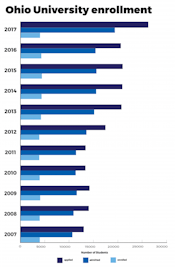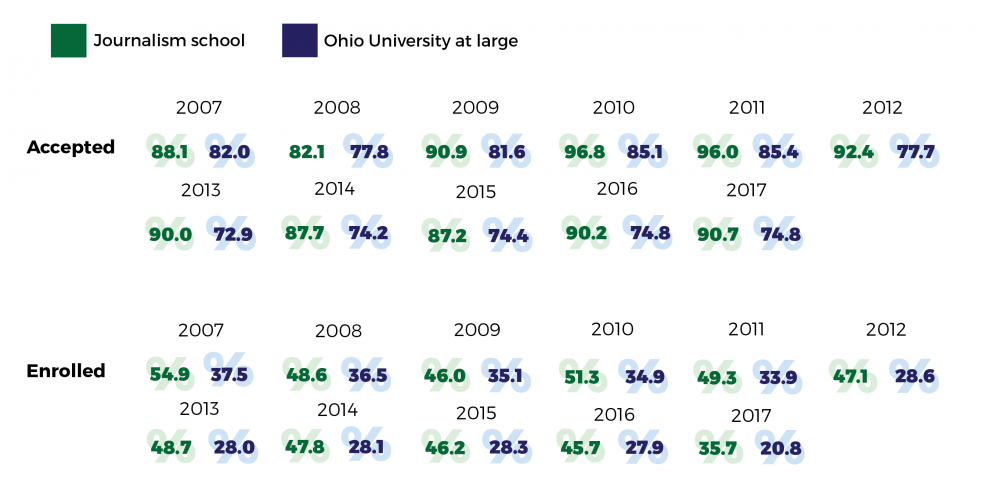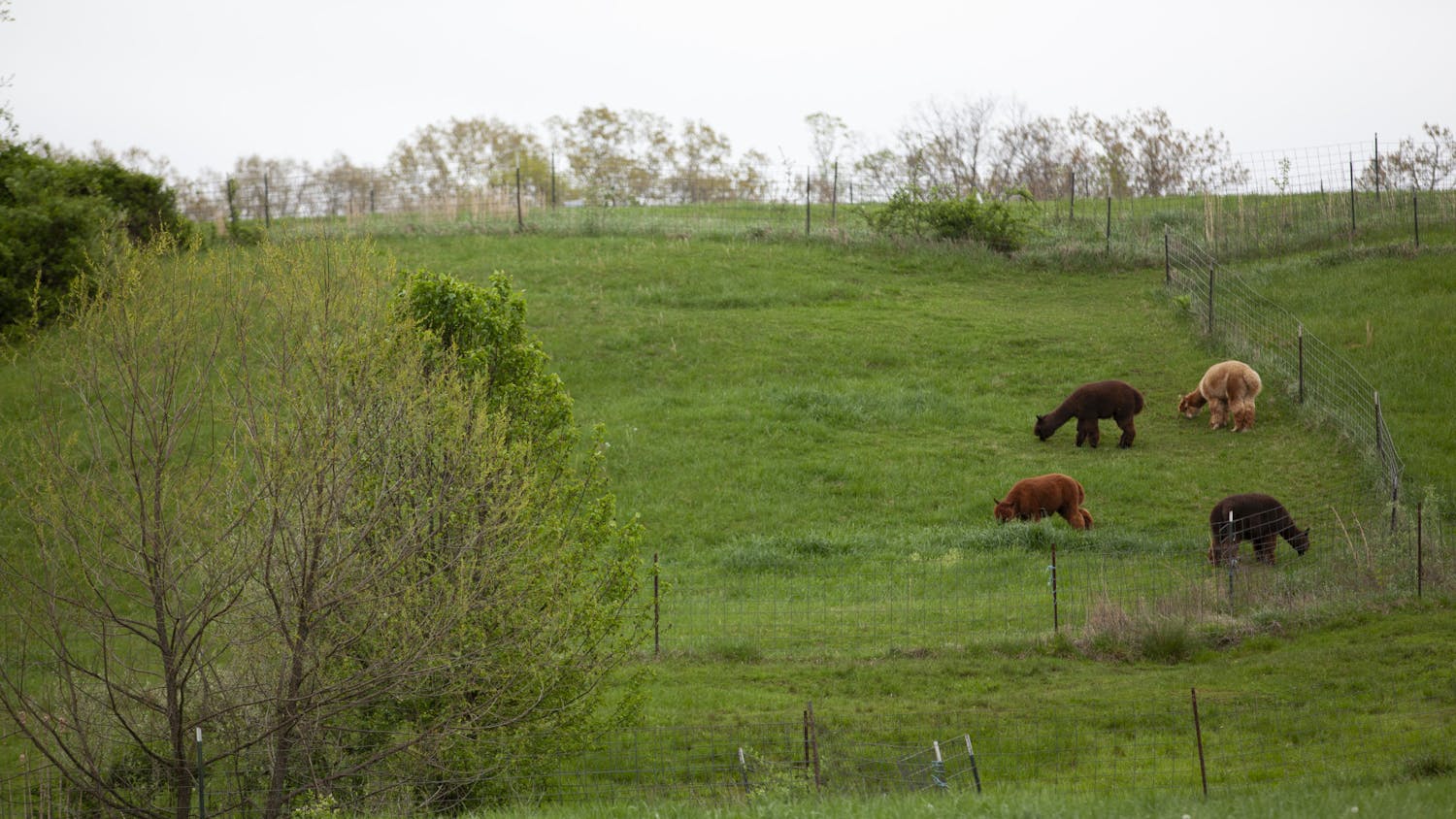The E.W. Scripps School of Journalism is getting smaller.
For the class of 2018 (which started at Ohio University in Fall 2014), there were 205 students in the freshman class of the program. That number means about 47.8 percent of those admitted to the program enrolled. For the class of 2021, which started in Fall 2017, 146 students enrolled — about 35.7 of those admitted.
The smaller freshman class size for the journalism school comes at the same time as an overall smaller freshman class at the university. The journalism school, however, is experiencing slightly larger declines than the university at large. The school has also been declining in enrollment for several years, even as total enrollment for the university rose.
Robert Stewart, the director of the journalism school, said there is definitely a downward trend for journalism school enrollment, and he is “waiting for it to bottom out.” The trend has a clear reason to him, however, and it doesn’t have anything to do with political attacks on the media.
“I think it’s not about the politics. It’s about the headlines,” Stewart said, referring to reports that journalism as an industry is rapidly declining.

There are journalism programs out there that might be experiencing a “Trump bump” thanks to the president’s criticisms of the media, according to some reports. Schools such as the Columbia University Graduate School of Journalism or the Annenberg School for Communication and Journalism at the University of Southern California report an increased number of applicants this academic year. Those numbers also do not necessarily translate to more enrolled students, however, as Scripps has seen.
The E.W. Scripps School of Journalism also had an approximately 20 percent increase in applicants for the 2017-18 academic year, but Stewart said he felt that jump was attributed to OU joining the Common Application than anything else.
In his communication with alumni, he found that perhaps a smaller journalism school would better match the smaller journalism market.
“I think some of our alums probably think that a gentle decrease in size somewhat matches what the job market looks like,” Stewart said. “Rather than have a bunch of graduates who can't get jobs, maybe the better thing is to have slightly fewer graduates.”
For current journalism students, a smaller number of students enrolling is not a problem at this point, but it could be in the future. For Alexis McCurdy, a sophomore studying journalism, the decline was not really a surprise.
“I have to worry about what that means down the road,” McCurdy said. “The worst thing that could happen is that OU ends up like OSU, where they don’t have a journalism program at all anymore.”
She has concerns about what smaller classes might mean to employers down the road if it affects the quality of the program, but for now, she said she “wouldn’t be mad” if her classes had more hands-on opportunities.
Some potential journalism students aren’t deterred by a political climate that disfavors media or a slightly smaller journalism school. Karina Czeiszperger, a student at Oakwood High School in Oakwood, Ohio, is considering studying journalism at OU in the future. To her, studying journalism at OU presents an opportunity to both tell others what’s happening and learn about the world.
“There’s always going to be a use for journalism,” Czeiszperger said. “It’s undervalued as a career, but people are always going to have a desire for accurate information.”






